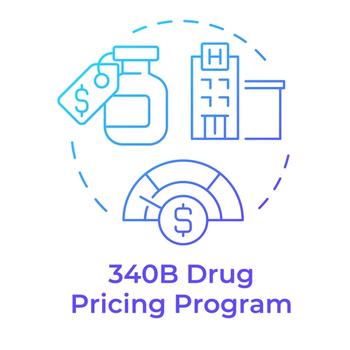
IQVIA: Medicine Spending Expected to Grow 4% to 7% by 2028
Over the next five years, list prices of protected prescription drugs are expected grow between 1% and 4% a year, while net prices are expected to decline by the same amount, IQVIA predicts.
Spending on prescription drugs at list prices increased on average 7.6% per year over the last five years, while payer net spending increased from $504 billion to $650 billion, or 5.5%, according to the newest
Total spending on medicines is expected to grow 4% to 7% through 2028 mostly introduction of new products and use of more novel therapies. Spending on next-generation biotherapeutics — including cell and gene and RNA therapies — is expected to reach $18 billion by 2028. But spending on immunology spending is expected to slow to 2% to 5% through 2028 from the impact of biosimilars.
“Areas of focus in this year’s report range from looking at health system utilization and its recovery from the pandemic, to how medicine usage patterns have shifted, to the complex nature of drug pricing, to the impact of out-of-pocket costs on patients,” Murray Aitken, executive director of IQVIA Institute for Human Data Science, wrote in the introduction to the report. “Dynamics that have become apparent during 2023 have driven significant revisions to the outlook.”
At the same time, patient out-of-pocket costs have risen more slowly, but there has been a sharp increase over the last two years. Manufacturer copay assistance offset patient costs by $23 billion in 2023 and $84 billion over the last five years. In 2023, savings programs were used for 19% of commercial prescriptions. The IQVIA reports suggest that higher patient costs from exposure to list prices could be leading to the increased use of copay programs. IQVIA indicated that copay programs are viewed positively by patients and help to increase adherence.
But IQVIA also found that payer accumulator and maximizer use is growing. These programs accounted for $4.8 billion of copay assistance, more than double than in 2019. With accumulators, the money from copay cards does not count toward patients’ annual deductible or out-of-pocket limit. With maximizers, the copay assistance is evenly spread over the year and classify some medications as non-essential, which limits the plan exposure to drug costs.
The IQVIA findings echo the results of a
The three large PBMs use accumulator programs. But some pharmaceutical companies have begun to lower the total amount of assistance given to patients through copay cards when accumulator or maximizer programs are in effect.
Patient Costs
The IQVIA report also found that patient out-of-pocket costs in aggregate increased by $5 billion in 2023, up 5.5% over 2022 and 11% over the last five years. Overall, however, average out-of-pocket costs have declined from $10.39 in 2018 to $9.78 in 2023 across all products and payers.
Just 1% of prescriptions have an out-of-pocket cost of $125 or more. But the higher the cost, the more likely the prescription will be abandoned. Patients starting new therapies abandoned 98 million prescriptions at the pharmacy last year, IQVIA found. And more than half of new prescriptions for novel therapies go unfilled, and only 31% of patients remained on therapy for a year.
About 1% of patients with commercial insurance reach an annual out-of-pocket cost about $2,000. In Medicare, 3% of beneficiaries have out-of-pocket costs of more than $2,000. The Inflation Reduction Act caps out-of-pocket costs at $2,000 beginning in 2025. IQVIA estimates that 1.3 million beneficiaries will save in aggregate $2.4 billion, or $1,924 per patient on average.
Earlier this year,
In six states — New York, Pennsylvania, Ohio, Illinois, North Carolina, and New Jersey — between 50,000 and 82,000 beneficiaries spent more than $2,000 out-of-pocket for prescription drugs in 2021. In California, Florida, and Texas, more than 100,000 Part D enrollees exceeded $2,000 in spending on prescription drugs.
Within diabetes, IQVIA has found that total out-of-pocket costs have declined for patients by $599 million since 2019. But while insulin costs have declined patient payments are still above $35 for many products. An increase in the use and the high cost of the GLP-1 agonists for diabetes have increased out-of-pocket costs for some patients.
The Inflation Reduction Act cap of $35 for out-of-pocket costs for insulin for patients in Medicare went into effect in January 2023. Last year, pharmaceutical companies, including Eli Lilly, Novo Nordisk and Sanofi, cut prices on insulin and agreed to cap out-of-pocket costs for many insulins at $35.
Despite this, IQVIA found that 27% of prescriptions in 2023 were more than $35.
Other Findings
- In 2023, total prescription medicine use increased by 3% and reached 210 billion days of therapy.
- The U.S. market at net prices grew to $435 billion in 2023, an increase of 9.9% when the decline in COVID-19 vaccines and therapeutics is excluded.
- Specialty medicines account for 54% of spending, up from 49% in 2018, driven by growth in immunology and oncology.
- The median annual treatment cost of new medicines exceeded $150,000 for the drugs launched in 2023, with those for oncology and rare diseases both approaching $300,000 per patient
- Health services utilization including visits, diagnostics, elective procedures, and drugs declined 3% in 2023 compared with 2022.
- Nearly 700,000 GLP-1 agonist new prescriptions for diabetes and obesity were filled in February 2024, up 181% compared with two years prior.
Newsletter
Get the latest industry news, event updates, and more from Managed healthcare Executive.




















































